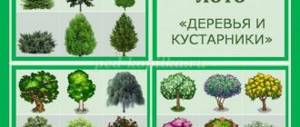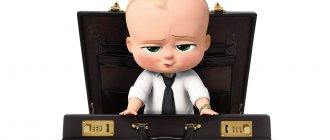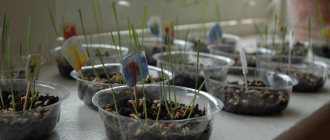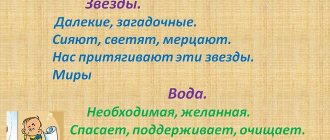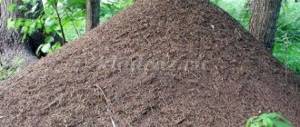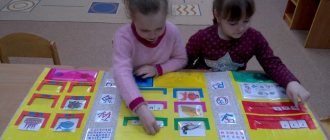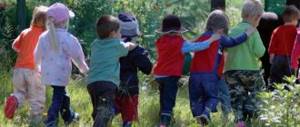Diagnostic cards for children of the first junior group
Observation data is recorded in a table using a three-point system:
3 points - the child acts independently
2 points - the child acts with the help of an adult
1 point – this indicator does not appear in the child
The last line of the table calculates the arithmetic mean of the scores, which makes it possible to draw a conclusion about the individual developmental characteristics of a particular child
If the child is average:
less than 1.5 points – low level of development
1.5 – 2.5 points – average level
2.5 – 3 points – high level of development
Based on the results of the last column, a general conclusion is drawn for the group in %.
Social and communicative development of children 2-3 years old
| F I child | Knows basic generally accepted norms and rules of relationships with adults and peers | Basic concepts about yourself, family, kindergarten have been formed | A positive attitude towards various types of work and creativity has been formed | The basics of basic safety have been formed | Average score | ||||||||
| In the game, imitates the actions of an adult | Able to play side by side (in parallel) with other children without disturbing | Says hello and goodbye, thanks verbally and non-verbally | Says his name | Names his family members | Talks about himself in the first person | Able to perform basic work tasks (wash hands, use a towel, handkerchief, comb, spoon) | Able to take off and put on basic wardrobe items (socks, trousers, elastic, sandals with Velcro) | Observes the work actions of an adult and imitates them in his activities | Follows basic rules of safe behavior in nature (does not approach unfamiliar animals, does not put plants in his mouth). | Understands the meaning of the words “dos and don’ts”, “dangerous” | Has an understanding of the rules of safe behavior when playing with sand and water (do not drink water, do not throw sand) | ||
Cognitive development of children 2-3 years old
| Child's full name | Development of cognitive research activities | Introduction to sociocultural values | Formed elementary mathematical representation | Elementary ideas about yourself have been formed | Introduction to the natural world | Average score | |||||
| Able to name objects in the surrounding reality and their purpose | Explores the color, shape, size of objects in different ways (knocks, rolls, throws...) | Names the elementary properties of objects | Assembles a nesting doll, a pyramid, focusing on the size | Plays story-based games | Distinguishes between the concepts one, many, one more | Selects frame inserts, matching size and shape | Correctly identifies parts of one's own body | Recognizes some domestic animals and their babies in nature, in pictures, and in toys | Distinguishes some vegetables and fruits by appearance | ||
Speech development of children 2-3 years old
| Child's full name | Speech as a means of communication | Speech as mastering the native language | Fiction | Average score | |||||||||
| Asks and answers questions from peers and adults | Understands speech addressed to him | Enjoys contact with peers | Understands ambiguous instructions (take the bear and put it to sleep) | Able to agree nouns and pronouns with verbs | Correctly uses some adjectives in speech that denote properties and qualities | Builds sentences from 2-3 words that are consistent with each other | Uses verbs in speech that denote one’s own actions and the actions of others | Uses nouns in speech - names of objects and toys | Enjoys listening to folk tales and nursery rhymes, songs | Enjoys looking at illustrations in books | Completes sentences from famous fairy tales | ||
Artistic and aesthetic development of children 2-3 years old
| Child's full name | Shows interest and independence in visual, constructive, model, and artistic activities | Involved in interaction with adults during productive activities | Has basic understanding of ways to be productive | Average score | ||||||||
| Drawing | Modeling | Construction | ||||||||||
| Shows interest in activities with pencils and paints | Participates in productive activities with an adult | Answers basic adult questions about products and properties | Communicates with an adult during productive activities | Sees the outline of objects | Draws different lines | Tears off a piece of plasticine from a piece | Creates images of objects in accessible ways | Knows the techniques of rolling, flattening, rolling | Names some constructor details | Constructs elementary buildings according to the model | ||
Physical development of children 2-3 years old
| Child's full name | Demonstrates neatness skills, uses individual hygiene items (handkerchief, towel, comb, potty) | Able to accept liquid and solid food. Uses spoon and cup correctly. | Able to walk and run without bumping into other children. Shows a desire to play outdoor games. | Can jump on two legs in place and moving forward. | Can pick up, hold, carry, put, throw, roll a ball. | Knows how to crawl, crawl under an arch, climb over an obstacle lying on the floor. | Average score |
Diagnostics of the pedagogical process in the second junior group
Author: Teacher Dubchenko Tatyana Yurievna.
MADO No. 42 Rostov-on-Don.
Diagnostics of the pedagogical process in the second junior group (from 3 to 4 years old)
File: Diagnostics of the pedagogical process in the second junior group (from 3 to 4 years old) 1
| Diagnostics of the pedagogical process in the second junior group (from 3 to 4 years) Filling date: October-May |
Diagnostics of the pedagogical process in the younger group (from 3 to 4 years old)
Toolkit for pedagogical diagnostics in the younger group (3-4 years)
Pedagogical diagnostic tools are a description of those problematic situations, questions, and observation situations that are used to determine the child’s level of development of one or another assessment parameter. During the period of pedagogical diagnostics, these situations and questions may be repeated in order to clarify the quality of the assessed parameter. This is possible when the child has been absent from the group for a long time or when there are discrepancies in the assessment of a certain parameter. Each parameter of pedagogical assessment can be diagnosed by several methods in order to achieve a certain accuracy. Also, one problem situation can be aimed at assessing several parameters, including from different educational areas.
Basic diagnostic methods:
— observation; — problematic (diagnostic) situation; - conversation.
Forms of pedagogical diagnostics:
- individual; - subgroup; - group.
Description of tools by educational area
Educational field "Social and communicative development"
- Tries to follow the rules of behavior in public places, when communicating with adults and peers, and in nature.
Methods: observation in everyday life and in organized activities.
Form of implementation: subgroup, individual.
Assignment: record the child’s style of behavior and communication during walks and independent activities.
- Knows his first and last name, the names of his parents.
Methods: conversation.
Form of implementation: individual.
Assignment: “Please tell me what is your name? What is your last name? What are the names of dad and mom?”
Educational field "Cognitive development"
- Able to group objects by color, size, shape.
Methods: problem situation.
Material: circle, square, triangle, rectangle, oval of the same color and different sizes, dummies and pictures of vegetables, fruits, doll dishes / clothes / furniture.
Form of implementation: individual, subgroup.
Assignment: “Find everything red, everything round, everything big.”
Educational field "Speech development"
- Pronounces all sounds clearly, identifies a given vowel sound from two.
Methods: problem situation, observation.
Material: didactic game “What sound?”
Form of implementation: individual, subgroup.
Assignment: “Repeat after me – A, U, O, E, Y.”
- Acts out excerpts from familiar fairy tales independently and at the request of an adult. Methods: problem situation.
Material: toys according to the number of children.
Form of implementation: subgroup, group.
Assignment: “Let’s tell the fairy tale “Kolobok.”
- Understands the social assessment of the actions of peers or characters in illustrations and literary works.
Methods: conversation, problem situation.
Material: fairy tale “Teremok”.
Form of implementation: individual, subgroup.
Assignment: “Why were the animals upset?” Who did the right thing? Who acted dishonestly? Why?".
Educational field "Artistic and aesthetic development"
- Creates images of objects from ready-made figures. Decorates paper blanks of various shapes.
Methods: problem situation, observation.
Material: geometric shapes made of paper of different colors and shapes (circle, square, triangle), blank vase.
Form of implementation: subgroup.
Task: “Decorate the vase.”
Educational field "Physical development"
- Able to walk and run, maintaining balance, in different directions as directed by an adult.
Methods: problem situation, observation in everyday life and organized activities.
Material: umbrella.
Form of implementation: group, subgroup.
Assignment: “Now we will play the game “Sunshine and Rain.” When I say “Sunny”, the children run. When I say “Rain,” the children run under the umbrella.”
Diagnostic chart of observations of individual development of children (Educational area “Social and communicative development”)
Age group _____________ Date ___________________________ ___________________________
| № | Sections | Socialization, development of communication, moral education | Self-service, independence, labor education | Child in family and community | Forming the foundations of security | Final indicator for each child (average value) | |||||||||||||||||
| Tries to follow the rules of behavior in public places, when communicating with adults and peers, in nature, and in games | Understands social assessment of peers, says hello, says goodbye, thanks for help | Performs basic work assignments (prepares materials for educational activities, puts away toys, helps set the table for dinner, participates in caring for plants and animals) | Able to dress and undress independently in a certain sequence, take care of one’s appearance, use soap, carefully wash hands, face, ears, wipe dry, use a comb, a handkerchief | Knows his first and last name, parents’ names, what he does | Oriented in the premises of a kindergarten, group, locker room | Knows the names and patronymics of kindergarten employees | Ideas about the simplest relationships in living and inanimate nature have been formed. | Follows the rules in games with small objects, didactic games, safety rules in games with sand, water, snow | Primary ideas about safe behavior on the road, safe movement in kindergarten premises, the rules of playing with small objects and the meaning of) | ||||||||||||||
| F.I. child | n/a | k/y | n/a | k/y | n/a | k/y | n/a | k/y | n/a | k/y | n/a | k/y | n/a | k/y | n/a | k/y | n/a | k/y | n/a | k/y | n/a | k/y | |
| Total children: | |||||||||||||||||||||||
| high level | |||||||||||||||||||||||
| average level | |||||||||||||||||||||||
| low level | |||||||||||||||||||||||
| Total % | |||||||||||||||||||||||
| high level | |||||||||||||||||||||||
| average level | |||||||||||||||||||||||
| low level | |||||||||||||||||||||||
| Final indicator for the group (average value) | |||||||||||||||||||||||
Level indicators: High level – 20-15 points Average level – 14-7 points Low level – 6-0 points
Educator:_______ /__________________/
Diagnostic chart of observations of individual development of children (Educational area “Cognitive development”)
Age group _____________ Date ___________________________ ___________________________
| № | Sections | Development of cognitive and research activities | Introduction to the natural world | Formation of elementary mathematical concepts | Familiarization with the subject environment, social world | Final indicator for each child (average value) | |||||||||||||||||||
| Able to establish the simplest connections between objects and phenomena, make the simplest generalizations, groups and classifies familiar objects | Able to group homogeneous objects according to several sensory characteristics: size, shape, color. In joint didactic games, he is able to follow gradually more complex rules | Familiar with the characteristic features of the seasons, seasonal changes, rules of behavior in nature | Knows and names some plants and animals, their young, especially their behavior and nutrition | Has an understanding of the properties of water, sand, snow and can understand the simplest relationships in nature | Correctly determines the quantitative relationship between two groups of objects, understands the specific meaning of the words “more”, “less”, “as much”, “equally”, many”, “one”, “one by one”, “none” | There are circles, squares, triangles, and objects that have corners and a round shape. Able to group objects by color, size, shape | Compares objects of contrasting and identical sizes according to a given size characteristic (length, width, height, overall size), using superposition and application techniques; denotes the result | Orients in space, time and | Familiar with objects in the immediate environment, their purpose, properties, professions | Familiar with his immediate surroundings, knows the name of the village | |||||||||||||||
| F.I. child | n/a | k/y | n/a | k/y | n/a | k/y | n/a | k/y | n/a | k/y | n/a | k/y | n/a | k/y | n/a | k/y | n/a | k/y | n/a | k/y | n/a | k/y | n/a | k/y | |
| Total children: | |||||||||||||||||||||||||
| high level | |||||||||||||||||||||||||
| average level | |||||||||||||||||||||||||
| low level | |||||||||||||||||||||||||
| Total % | |||||||||||||||||||||||||
| high level | |||||||||||||||||||||||||
| average level | |||||||||||||||||||||||||
| low level | |||||||||||||||||||||||||
| Final indicator for the group (average value) | |||||||||||||||||||||||||
Level indicators: High level – 22-16 points Average level – 15-7 points Low level – 6-0 points
Educator:_______ /__________________/
Diagnostic chart of observations of individual development of children (Educational area “Speech development”)
Age group _____________ Date ___________________________ ___________________________
| № | Sections | Speech development | Introduction to fiction | Final indicator for each child (average value) | |||||||||||||
| Looks at pictures and is able to briefly talk about what he saw. | Answers questions from an adult regarding the immediate environment, the names and purposes of items of clothing, shoes, hats, dishes, furniture, types of transport | Uses all parts of speech, simple uncommon sentences and sentences with homogeneous and members, clearly pronounces words and short phrases | Distinguishes and names essential details and parts of objects, some materials and their properties, names parts of the day | Clearly pronounces all vowel sounds, determines a given vowel sound from two, and clearly pronounces vowels (a, u, i, o, e) and some consonant sounds in words: | Understands the social assessment of the actions of heroes of literary works. Imitates facial expressions, movements, and intonation of heroes of literary works. | Reads nursery rhymes and short poems by heart, dramatizes and dramatizes short passages from folk tales | |||||||||||
| F.I. child | n/a | k/y | n/a | k/y | n/a | k/y | n/a | k/y | n/a | k/y | n/a | k/y | n/a | k/y | n/a | k/y | |
| Total children: | |||||||||||||||||
| high level | |||||||||||||||||
| average level | |||||||||||||||||
| low level | |||||||||||||||||
| Total % | |||||||||||||||||
| high level | |||||||||||||||||
| average level | |||||||||||||||||
| low level | |||||||||||||||||
| Final indicator for the group (average value) | |||||||||||||||||
Level indicators: High level – 14-11 points Average level – 10-5 points Low level – 4-0 points
Educator:_______ /__________________/
Diagnostic chart of observations of individual development of children (Educational field “Artistic and aesthetic development”)
Age group _____________ Date ___________________________ ___________________________
| № | Sections | Introduction to art | Visual activities | Musical activities | Constructive - modeling activity | Final indicator for each child (average value) | |||||||||||||||||||
| Familiar with the elementary means of expression in various types of arts (color, sound, shape, movement, gestures), | Knows how to correctly hold a pencil, felt-tip pen, brush Knows the basic colors, shades for depicting objects of different shapes, knows how to create objects consisting of 2-3 parts | Creates images of objects from ready-made figures. Decorates paper blanks of various shapes with Dymkovo patterns | Has an understanding of the properties of clay, plasticine and modeling methods | Listens to a piece of music until the end. Recognizes familiar songs, notices changes in sound (soft-loud), distinguishes sounds by pitch within an octave, understands the nature of music, parts | Familiar with musical genres: song, dance, march Sings without falling behind or ahead of others | Can perform dance movements: twirl in pairs, alternately stamp feet, move to music with objects, perform a straight gallop, move rhythmically and according to the image to music | Distinguishes and names means of expression in different types of arts (color, sound, shape, movement, gestures) | Distinguishes and names musical instruments: metallophone, drum, pipe, metallophone, bell, tambourine, rattle, drum | Knows, names and correctly uses parts of building materials (cubes, bricks, plates, cylinders, triangular prisms) | Changes the building and, by adding or replacing some parts with others | |||||||||||||||
| F.I. child | n/a | k/y | n/a | k/y | n/a | k/y | n/a | k/y | n/a | k/y | n/a | k/y | n/a | k/y | n/a | k/y | n/a | k/y | n/a | k/y | n/a | k/y | n/a | k/y | |
| Total children: | |||||||||||||||||||||||||
| high level | |||||||||||||||||||||||||
| average level | |||||||||||||||||||||||||
| low level | |||||||||||||||||||||||||
| Total % | |||||||||||||||||||||||||
| high level | |||||||||||||||||||||||||
| average level | |||||||||||||||||||||||||
| low level | |||||||||||||||||||||||||
| Final indicator for the group (average value) | |||||||||||||||||||||||||
Level indicators: High level – 22-16 points Average level – 15-7 points Low level – 6-0 points
Educator:_______ /__________________/
Diagnostic chart of observations of individual development of children (Educational area “Physical development”)
Age group _____________ Date ___________________________ ___________________________
| № | Sections | Formation of initial ideas about a healthy lifestyle | Physical Culture | Final indicator for each child (average value) | |||||||||||||
| Knows about the health importance of morning exercises, hardening, maintaining a daily routine, healthy and unhealthy foods | Knows how to distinguish and name sensory organs (eyes, mouth, nose, ears), knows about their role in the body and how to protect and care for them | Able to walk and run, maintaining balance, in different directions as directed by an adult, to form a column one at a time, in a line, in a circle, to find one’s place during formations | Can crawl on all fours, climb a gymnastic wall at will | Independence, activity and creativity are developed when performing physical exercises and in outdoor games. Able to follow basic rules in outdoor games, coordinate movements, and navigate in space | Able to jump on two legs in place, moving forward, in length from a standing position | Rolls the ball in a given direction at a distance, throws and catches the ball with both hands at the same time | |||||||||||
| F.I. child | n/a | k/y | n/a | k/y | n/a | k/y | n/a | k/y | n/a | k/y | n/a | k/y | n/a | k/y | n/a | k/y | |
| Total children: | |||||||||||||||||
| high level | |||||||||||||||||
| average level | |||||||||||||||||
| low level | |||||||||||||||||
| Total % | |||||||||||||||||
| high level | |||||||||||||||||
| average level | |||||||||||||||||
| low level | |||||||||||||||||
| Final indicator for the group (average value) | |||||||||||||||||
Level indicators: High level – 14-11 points Average level – 10-5 points Low level – 4-0 points
Educator:_______ /__________________/
| Pedagogical monitoring of the educational process | |||||||||||||||
| Age group _______________________ | |||||||||||||||
| date 201__ – 201__ academic year | |||||||||||||||
| Last name, first name of the child | Levels by educational area | Final result | |||||||||||||
| Social and communicative development | Speech development | Cognitive development | Artistic and aesthetic development | Physical development | |||||||||||
| n/a | k/y | n/a | k/y | n/a | k/y | n/a | k/y | n/a | k/y | n/a | k/y | ||||
| Level of mastery of EP | |||||||||||||||
| Total children: | |||||||||||||||
| high level | |||||||||||||||
| average level | |||||||||||||||
| low level | |||||||||||||||
| Total %: | |||||||||||||||
| high level | |||||||||||||||
| average level | |||||||||||||||
| low level | |||||||||||||||
Educator:_______ /__________________/ ____________________
RESULTS of diagnosing the level of development of children:
BEGINNING OF THE YEAR:
Total children on the list: ________ children Total children examined: _________ children
High level of ________________ children ______________%
Average level of ________________ children ______________%
Low level of ________________ children ______________%
Analysis, comments___________
THE END OF THE YEAR:
Total children on the list: ________ children Total children examined: _________ children
High level of ________________ children ______________%
Average level of ________________ children ______________%
Low level of ________________ children ______________%
Analysis, comments ________________
